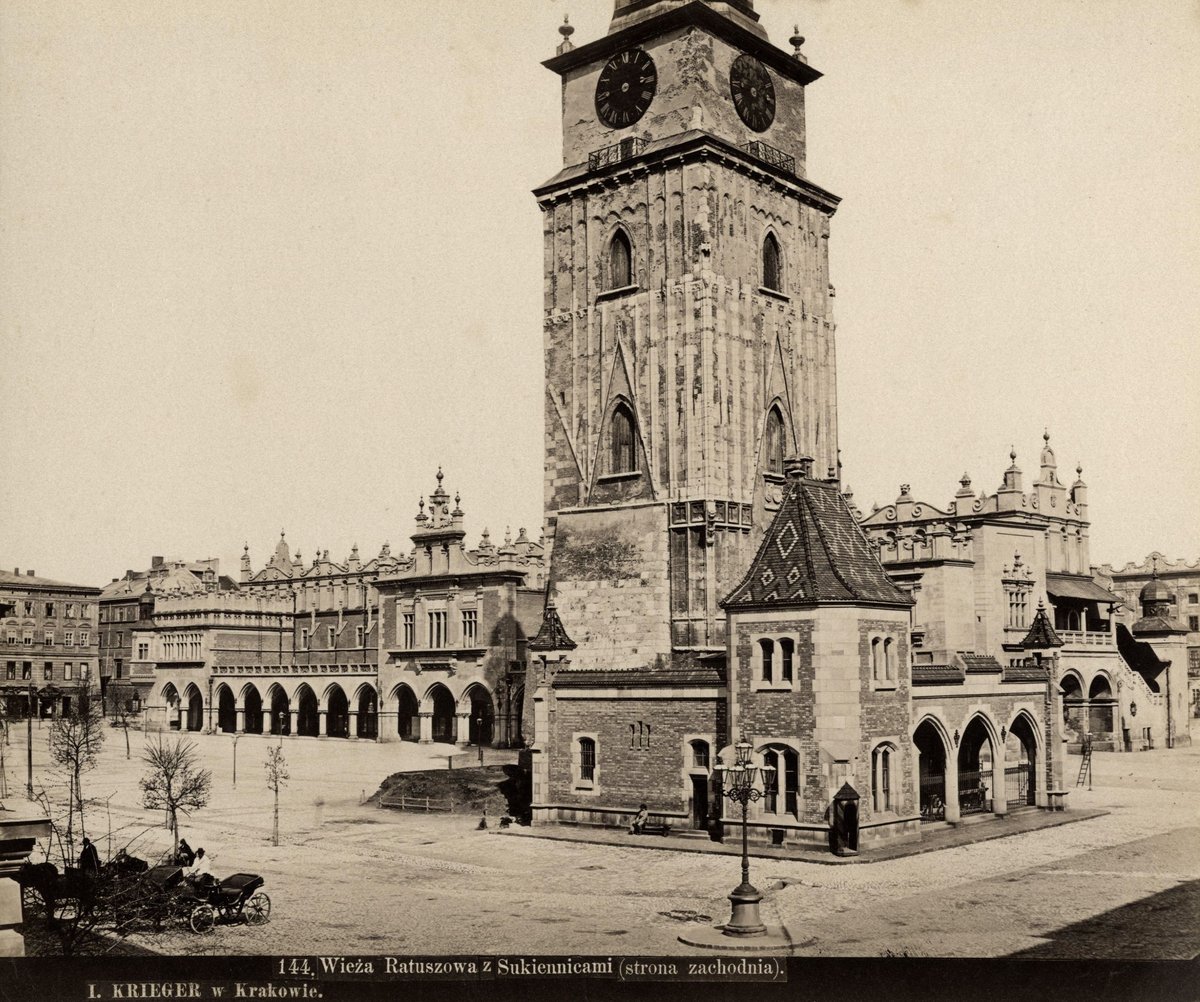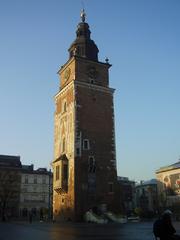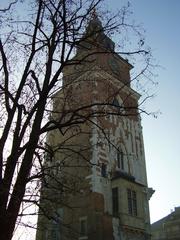
Town Hall Tower Kraków: Visiting Hours, Tickets, and Comprehensive Tourist Guide
Date: 14/06/2025
Introduction
Standing as a proud sentinel over Kraków’s Main Market Square, the Town Hall Tower (Wieża Ratuszowa) is both a relic of the city’s medieval governance and a vibrant cultural hub today. As the last surviving element of Kraków’s original Town Hall complex, the Tower is a must-see for anyone interested in the city’s rich urban history, distinctive Gothic architecture, and evolving civic identity. This guide offers a comprehensive overview of the Tower’s history, architectural features, visitor information, and practical tips for making the most of your visit.
Table of Contents
- Medieval Origins and Historical Development
- Architectural Features and Evolution
- Symbolism and Civic Identity
- Preservation, Adaptive Reuse, and Cultural Transformation
- Visiting Hours, Tickets, and Accessibility
- Visitor Experience and Museum Exhibits
- Observation Deck and Photographic Spots
- Guided Tours, Nearby Attractions, and Travel Tips
- Safety, Facilities, and Regulations
- Frequently Asked Questions (FAQ)
- Conclusion and Final Tips
- References and Official Links
Medieval Origins and Historical Development
The Town Hall Tower is the only surviving part of Kraków’s medieval Town Hall, an administrative complex dating to the early 14th century. The original wooden hall was replaced by a brick structure soon after the city received its municipal rights in 1257. The Tower itself was first documented in 1383 and underwent several expansions, reflecting Kraków’s growing importance and prosperity. Major construction milestones are commemorated by dates engraved on the ground floor: 1444 and 1472 (medievalheritage.eu).
Architectural Features and Evolution
Exterior and Structure
Rising over 70 meters, the Town Hall Tower is a classic example of Polish Gothic architecture, constructed with stone and red brick. Its robust vertical silhouette, pointed arches, and decorative stonework, including quatrefoils and tracery, exemplify medieval craftsmanship. The Baroque roof “helmet” added after a fire in 1680 was later replaced, and a 1703 storm gave the tower its characteristic lean—over 55 centimeters off vertical (krakow.travel; historyhit.com).
Two stone lions, installed in the 19th century and relocated from the Morstin Palace during renovations, greet visitors at the entrance (wikipedia). The preserved Gothic portal, adorned with Kraków’s coat of arms and the Polish eagle, underscores the building’s civic symbolism.
Interior and Layout
Inside, the ground floor once safeguarded the city’s treasury beneath a ribbed vault with leaf motifs. The upper floors, accessible by a spiraling staircase of 110 stone steps, originally served for administrative and ceremonial functions. The basement, historically a dungeon and torture chamber, now houses a café and theater—a striking transformation from punitive to cultural use (introducingkrakow.com).
The first-floor hall features a restored Gothic cross-ribbed vault with original polychrome and gilding, one of Kraków’s most exquisite medieval interiors (krakow.wiki).
Symbolism and Civic Identity
From its inception, the Tower symbolized Kraków’s civic power and autonomy. When the rest of the Town Hall was demolished in the 19th century, the Tower survived thanks to public protest, underscoring its importance to local identity (historytools.org). Today, the Tower remains a potent emblem of Kraków’s resilience and continuity, anchoring the Main Market Square as a nucleus of urban life.
Preservation, Adaptive Reuse, and Cultural Transformation
The Tower’s endurance is credited to dedicated preservation efforts, especially in the 20th century. Major restorations in the 1960s focused on maintaining its Gothic character and adapting it for public use (wikipedia). Now managed by the Historical Museum of Kraków, the Tower is home to exhibitions, a modern clock mechanism, and the Teatr Ludowy in its basement. The shift from medieval dungeon to contemporary cultural venue illustrates Kraków’s commitment to adaptive reuse and heritage conservation.
Visiting Hours, Tickets, and Accessibility
-
Opening Hours:
- April–October: 10:00 AM – 6:00 PM
- November–March: 10:00 AM – 4:00 PM
- Closed on major holidays and the first Tuesday of each month (krakow.wiki)
- Last admission is 30 minutes before closing.
-
Ticket Information:
- Free admission on Mondays
- Standard adult tickets: 10–15 PLN
- Reduced rates for students, seniors, and children
- Free for children under 7
- Tickets available on-site or online via the Museum of Kraków’s ticket system
-
Accessibility:
- The Tower is not wheelchair accessible due to steep, narrow stone stairs.
- The ground floor and café are accessible.
Visitor Experience and Museum Exhibits
Upon entry, visitors are greeted by the atmospheric Gothic interior and the historic spiral staircase. Museum exhibits focus on:
- The Town Hall’s architectural evolution
- Archival photographs of the Main Square and Kraków’s urban past
- Gothic stonework and architectural fragments
- The old and modernized clock mechanism, ensuring precision timekeeping (krakow.wiki)
Allocate 30–60 minutes for your visit, depending on your interest in the exhibits and the observation deck.
Observation Deck and Photographic Spots
The highlight is the open-air observation deck atop the Tower, offering panoramic views of the Main Market Square, Old Town rooftops, and distant Tatra Mountains on clear days (whichmuseum.com). Early morning or late afternoon visits provide the best lighting for photography and fewer crowds.
Guided Tours, Nearby Attractions, and Travel Tips
-
Guided Tours:
- Book through the Historical Museum of Kraków or local tour operators.
- Tours often include the Tower, Main Market Square, St. Mary’s Basilica, the Cloth Hall, and the Barbican.
-
Nearby Attractions:
- St. Mary’s Basilica
- Sukiennice (Cloth Hall)
- Rynek Underground Museum
- Eros Bendato sculpture
-
Travel Tips:
- Wear comfortable shoes for the climb.
- Visit outside peak hours for a quieter experience.
- No restrooms or cloakroom inside; plan accordingly.
Safety, Facilities, and Regulations
- Children must be supervised—stairs and observation deck are steep and exposed.
- Large bags, food, and drinks are not allowed in exhibition areas.
- Photography is permitted, but flash and tripods may be restricted.
Frequently Asked Questions (FAQ)
Q: What are the current visiting hours for the Town Hall Tower?
A: Generally 10:00 AM–6:00 PM (April–October), 10:00 AM–4:00 PM (November–March). Closed holidays and the first Tuesday of each month.
Q: How do I buy tickets?
A: Tickets are available on-site and online (Museum of Kraków’s ticket system).
Q: Is the Tower accessible for wheelchairs or strollers?
A: No, access is limited due to historic stairs.
Q: Are guided tours available?
A: Yes, through the Historical Museum or local operators.
Q: What else can I visit nearby?
A: St. Mary’s Basilica, Cloth Hall, Rynek Underground, and more—all within walking distance.
Conclusion and Final Tips
The Town Hall Tower is more than a historical landmark—it’s a living testament to Kraków’s medieval origins, civic pride, and ongoing cultural vitality. With its striking Gothic architecture, storied past, and breathtaking views, the Tower offers an unmissable experience for visitors. Plan ahead by checking the latest visiting hours and ticket information, wear comfortable shoes, and consider joining a guided tour to enrich your understanding of Kraków’s urban heritage.
For updates on special events, exhibitions, and travel tips, download the Audiala app and follow Kraków’s official tourism channels. Combine your Tower visit with nearby attractions for a full immersion in the city’s history and vibrant present.
References and Official Links
- Town Hall Tower Kraków: Medieval Heritage
- Kraków Town Hall Tower – Krakow Travel
- History Tools – Kraków’s Resilient Medieval Icon
- Town Hall Tower, Kraków – Wikipedia
- History Hit – Town Hall Tower
- WhichMuseum – Town Hall Tower Kraków
- Kraków Wiki – Town Hall Tower
- Museum of Kraków – Town Hall Tower
- KrakowBooking – What Happened to Krakow’s Town Hall
- Official Historical Museum of Kraków – Town Hall Tower
- Kraków Tourism Official Site
































































